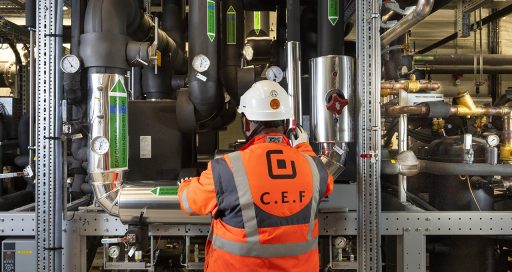New Delhi uses battery storage to modernise its electricity grid
Reading time: 3 min
In the Indian metropolis, a new 10-MW grid-scale battery storage system is paving the way for wider adoption of the solution to stabilise the grid as it integrates renewables.
![]()
India has begun to restructure its electricity grid by integrating renewables and acquiring battery storage systems. Tata Power and AES commissioned a first 10-MW grid-scale battery storage system in early 2019 in the New Delhi suburbs.
“By choosing storage over alternatives, India is taking steps to modernise its energy system”
The innovative storage system will improve grid stability and provide better peak load management, system flexibility, and power quality management, says Praveer Sinha, Tata Power CEO/Managing Director. Tata Power-DDL’s two million customers will also have the benefit of better protection of the critical facilities.
Fast, agile ramping
One of the advantages of the storage technology is the relative speed of battery system installation compared to that of conventional pumped hydroelectric energy storage systems. Led by Actemium India – Vasundhara Automation and Engineering Services, a VINCI Energies subsidiary, the New Delhi project was completed in just 14 months thanks to rigorous scheduling. “Engineering skills and project management expertise enabled Vasundhara to achieve this result,” says Satheesha Hulimane of Actemium India. The Indian Business Unit handles project engineering and balance of plant installations, including transformers, grid, HVAC, lighting, and fire protection systems.
“This project is a first for India, but Actemium already has substantial experience in this field, with a number of project references, particularly in Europe,” says the Indian manager.
Focus on renewable energies
The New Delhi system is expected to pave the way for battery storage across the entire Indian grid, say the Indian managers.
Manish Kumar, Managing Director of Energy Storage for AES, told Power magazine that “By choosing storage over alternatives, India is taking steps to modernise its energy system. We think this will allow for rapid deployment of storage across the country, integrating solar and wind […] throughout the country.”
“Industry and government are working to develop renewable energy – both solar and wind – in India,” says Satheesha Hulimane of Actemium India. The country has a goal of installing 225 GW of renewable power generation by 2022.
This target may well accelerate the rollout of battery storage systems, which can provide the flexibility needed to better integrate intermittent solar and wind energy resources in the country’s electric grid. Battery storage will be invaluable in regions with insufficient grid infrastructure.
20/02/2020





